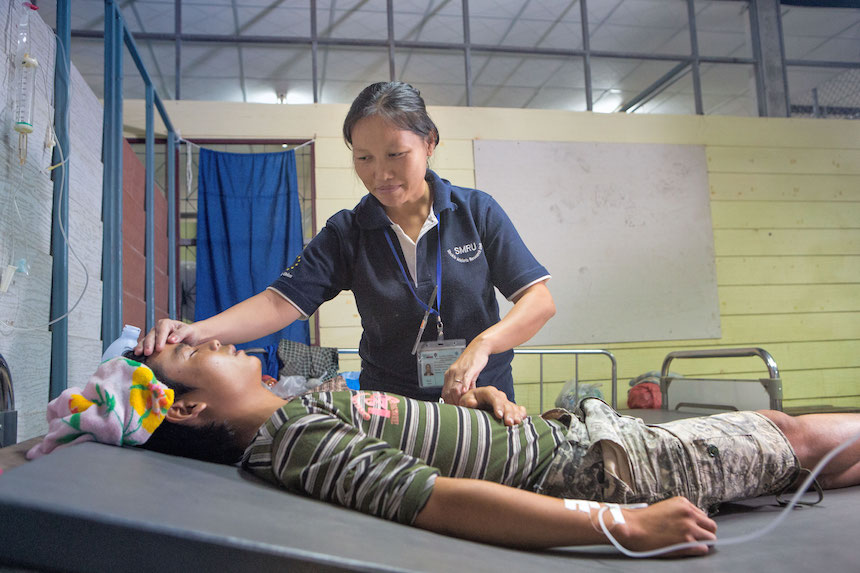
At a biotech conference in Hyderabad, India, Dorairajan Balasubramanian of India met fellow biologist Anwar Nasim of Pakistan. They’re both TWAS Fellows, and when they retired to Balasubramanian’s home for an evening of tea and poetry, the conversation between them turned to a source of pride for India: the development of a new, inexpensive hepatitis B vaccine.
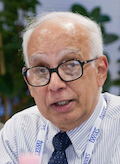 That kindled Nasim’s interest. After all, millions of Pakistanis are exposed to hepatitis B. So Balasubramanian – Balu, for short – arranged a meeting between Nasim and a representative of the Indian vaccine-maker Shantha Biotechnics.
That kindled Nasim’s interest. After all, millions of Pakistanis are exposed to hepatitis B. So Balasubramanian – Balu, for short – arranged a meeting between Nasim and a representative of the Indian vaccine-maker Shantha Biotechnics.
“India had become a world leader in vaccine production”, said Nasim, “so they took us to visit several industries, plus a knowledge park. Balu and I discussed the possibility of India and Pakistan joining together, joining hands, to produce vaccines.”
That was the beginning of the Vaccines for Peace initiative a decade ago, providing the Indian firm with millions of potential customers and providing Pakistanis with affordable vaccines.
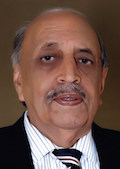 Vaccines for Peace is just one example of how science diplomacy can advance science and form bonds across borders, even when countries have uneasy political relationships. In the past half-century, developed nations have led the field of international relations based on science. And today, the developing world’s interest is growing.
Vaccines for Peace is just one example of how science diplomacy can advance science and form bonds across borders, even when countries have uneasy political relationships. In the past half-century, developed nations have led the field of international relations based on science. And today, the developing world’s interest is growing.
But there’s an important difference in the South’s perspective, experts say. In developed nations, even well-meaning science diplomacy may include an element of soft power. In the South, after decades of colonialism and Cold War geopolitics, unease about the intentions of global superpowers remains. But for nations keen to build their science strength and technological capability, it can be a way to engage in scientific projects or access resources that otherwise might be out of reach.
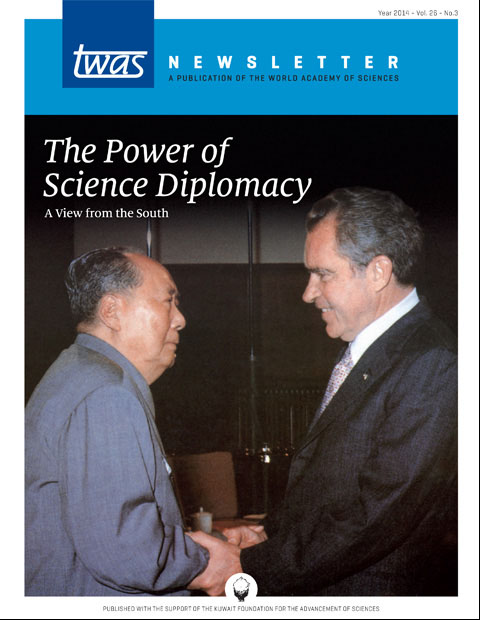 One measure of the growing commitment in the developing world is a recent high-profile speech by new Indian Prime Minister Narendra Modi. Science and technology are “at the forefront of our diplomatic engagement”, Modi said during an address at the 102nd Indian Science Congress. “There is a growing trend of international collaboration in research and development, not just among business enterprises, but equally among researchers and scholars at universities and laboratories. We should take full advantage of this.”
One measure of the growing commitment in the developing world is a recent high-profile speech by new Indian Prime Minister Narendra Modi. Science and technology are “at the forefront of our diplomatic engagement”, Modi said during an address at the 102nd Indian Science Congress. “There is a growing trend of international collaboration in research and development, not just among business enterprises, but equally among researchers and scholars at universities and laboratories. We should take full advantage of this.”
Balasubramanian, a former TWAS secretary-general, was one of five winners of the 2014 TWAS Regional Prize for Science Diplomacy. Scientists, he believes, are in a unique position to bring countries closer.
“Movies and music have willy-nilly brought people together. Cricket matches do the same”, he added. “Why not science and technology?”
How science works across borders
Science diplomacy is a broad way of describing how scientific teamwork between nations can solve human problems and improve international relationships.
Nations and cultures have long built relationships based on science. But the modern era of science diplomacy emerged in the latter half of the 21st century, when the United States used scientific research as a basis for building better relationships with China and the Soviet Union.
Today, science diplomacy takes many forms. Science can support diplomatic efforts, as when researchers provide insight to support a new treaty on protecting oceans. Increasingly, nations are placing scientific attachés in their overseas embassies. Diplomacy may help lay the foundation for a multi-national science project. Or scientific cooperation can begin with the explicit intention of improving relations.
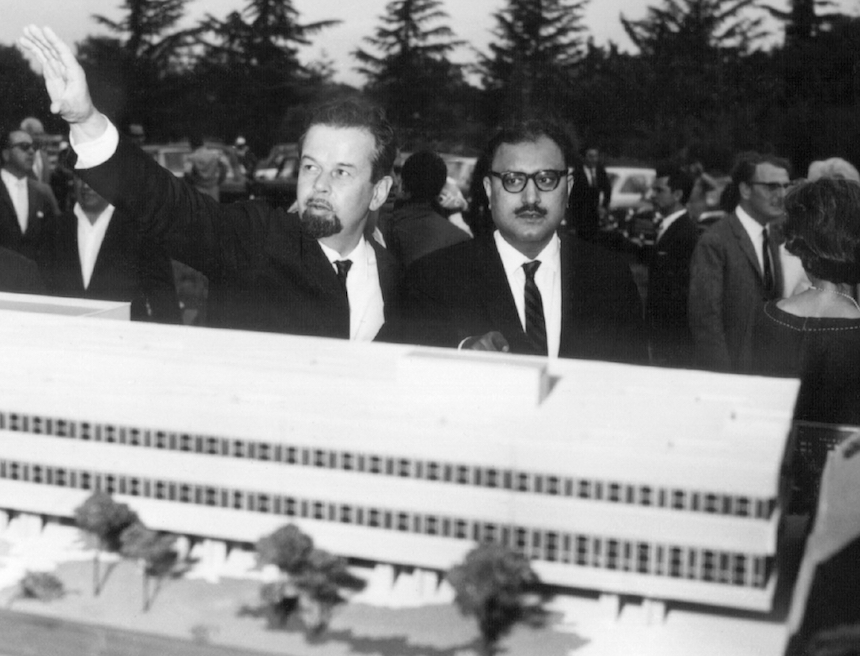 TWAS has long encouraged international research cooperation and it has recently emerged as a hub for science diplomacy in the South. In 2011, TWAS signed an agreement with the American Association for the Advancement of Science (AAAS) to host science diplomacy workshops and courses on topics such as energy and agriculture. In 2013, TWAS worked with the Italian Ministry of Foreign Affairs and the Hungarian Academy of Sciences on a roundtable exploring how to refit Cold War science links to 21st century needs. In 2014, TWAS worked with Rwandan President Paul Kagame and the World Bank to support a forum on improving African higher education.
TWAS has long encouraged international research cooperation and it has recently emerged as a hub for science diplomacy in the South. In 2011, TWAS signed an agreement with the American Association for the Advancement of Science (AAAS) to host science diplomacy workshops and courses on topics such as energy and agriculture. In 2013, TWAS worked with the Italian Ministry of Foreign Affairs and the Hungarian Academy of Sciences on a roundtable exploring how to refit Cold War science links to 21st century needs. In 2014, TWAS worked with Rwandan President Paul Kagame and the World Bank to support a forum on improving African higher education.
The Swedish International Development Cooperation Agency (Sida) provides key funding for TWAS’s science diplomacy programme. Last year, TWAS and India’s Department of Science and Technology signed an agreement to provide science diplomacy training and events in India and Trieste, Italy, where TWAS is based. TWAS is also exploring cooperation on science diplomacy with the Commission on Science and Technology for Sustainable Development in the South (COMSATS), an intergovernmental organization based in Islamabad, Pakistan.
A perspective of many pieces
How does the developing world as a whole view science diplomacy? The answer is complex. While there is no single, over-arching perspective, there is a patchwork quilt with a recognizable pattern. And each country has to figure out where it falls into that pattern.
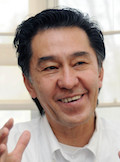 Collaborative projects tied to science diplomacy are on the rise in Latin America and the Caribbean, said Jaime Urrutia Fucugauchi, president of the Mexican Academy of Sciences, in an email interview. But the character of science diplomacy varies widely. “Many factors are involved to different degrees, including geography, history, economics, politics, social development”, he said. “Perceptions change over time.”
Collaborative projects tied to science diplomacy are on the rise in Latin America and the Caribbean, said Jaime Urrutia Fucugauchi, president of the Mexican Academy of Sciences, in an email interview. But the character of science diplomacy varies widely. “Many factors are involved to different degrees, including geography, history, economics, politics, social development”, he said. “Perceptions change over time.”
The result: a broad spectrum of reasons for developing countries to pursue science diplomacy. One way to imagine this spectrum is with “access” at one end and “influence”at the other, said Vaughan Turekian, director of the AAAS Center for Science Diplomacy. The confluence of access and influence becomes especially important for developing countries that are emerging as more active global players.
 “As developing countries begin to take a larger role in global politics and economics, increasing their influence in the larger debates becomes a national priority”, Turekian said. “So many of the issues important to developing countries – economic growth, sustainable development, agriculture, attracting talent, building innovative and entrepreneurial systems – are underpinned by science and technology development. As such, science diplomacy takes on a very special role: first, to increase their influence and input into global issues that affect them, and second, to build those connective links with other nations that allows them to meet their national priorities.”
“As developing countries begin to take a larger role in global politics and economics, increasing their influence in the larger debates becomes a national priority”, Turekian said. “So many of the issues important to developing countries – economic growth, sustainable development, agriculture, attracting talent, building innovative and entrepreneurial systems – are underpinned by science and technology development. As such, science diplomacy takes on a very special role: first, to increase their influence and input into global issues that affect them, and second, to build those connective links with other nations that allows them to meet their national priorities.”
Like many countries, Pakistan has been engaged in international science cooperation projects, said Imtinan Elahi Qureshi, the executive director of COMSATS. It has been involved with CERN (the European Organization for Nuclear Research) since the 1960s. It has bilateral scientific cooperation agreements with more than 50 countries and scientific staff in its UN missions.
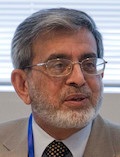 But in an email interview, Qureshi said some factors could slow the uptake of science diplomacy in the South. Many scientists and policymakers don’t see how science diplomacy is different from conventional science cooperation. Also, developing countries often don’t have the funds or local expertise to take part in big multinational science ventures that rely on science diplomacy.
But in an email interview, Qureshi said some factors could slow the uptake of science diplomacy in the South. Many scientists and policymakers don’t see how science diplomacy is different from conventional science cooperation. Also, developing countries often don’t have the funds or local expertise to take part in big multinational science ventures that rely on science diplomacy.
And after generations of colonialism and geopolitical manoeuvering, developing nations may be wary of science engagement with the North. In negotiating a treaty, Qureshi said, they may “find it intimidating to confront those who have the support of world’s best scientific manpower and institutions”. If there are conflicting interests or interpretations, he added, the concern is that “science becomes a mechanism of political gains rather than an instrument of universal good”.
But COMSATS is hopeful about the potential of science diplomacy, he said, and it has recently launched a project to make science diplomacy better understood in the South.
Better lives through access to science
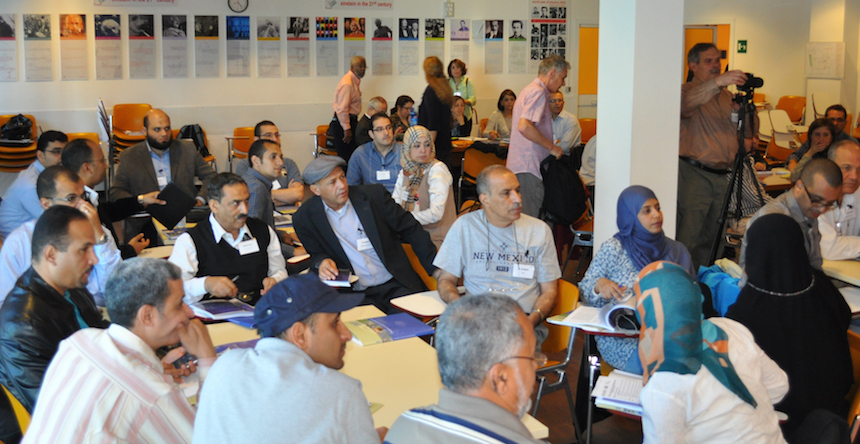 Increasingly, the developing world sees science diplomacy as an avenue to access existing science. This is helping some countries improve their infrastructure, invigorate their educational systems and even treat their sick.
Increasingly, the developing world sees science diplomacy as an avenue to access existing science. This is helping some countries improve their infrastructure, invigorate their educational systems and even treat their sick.
Science diplomacy has focused on expanding access to education and opportunities for women. Working with AAAS, top officials from Rwanda and other East African nations convened in 2010 to discuss cooperation in science education. The Kuwait Foundation for the Advancement of Science and the Kuwait Institute of Scientific Research have hosted conferences of women scientists and engineers from the Arab world, involving high-level diplomats from Kuwait, France, the United States and other nations.
TWAS Fellow Peter Mugyenyi is a Ugandan physician, a leading figure in HIV/AIDS research and a 2014 winner of the TWAS Regional Prize for Science Diplomacy. He was also a major advisor in the “President’s Emergency Plan for AIDS Relief” (PEPFAR) initiative from the United States, convincing the global power, through research, that Africans would follow antiretroviral treatment regimens. The programme brought life-saving anti-retroviral treatments for up to 7.7 million Africans suffering from HIV/AIDS.
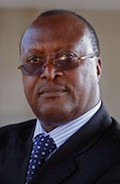 Mugyenyi also leads one of Africa’s largest HIV/AIDS treatment and research centres – the Joint Clinical Research Centre – which works with institutions in Africa, the United States, Europe, Japan and India.
Mugyenyi also leads one of Africa’s largest HIV/AIDS treatment and research centres – the Joint Clinical Research Centre – which works with institutions in Africa, the United States, Europe, Japan and India.
“We didn’t need to invent the wheel”, said Mugyenyi. “The point was the fastest way, the quickest way and the most efficient way to bring Africa up to speed was to work in collaboration with other scientists all over the world. And in this process we needed science diplomacy to make it come about.”
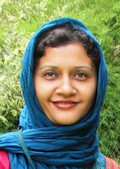 Bangladesh, where only 60% of the population has access to electricity, has a science-diplomacy engagement with Russia. Bangladeshi Prime Minister Sheikh Hasina visited Russian President Vladimir Putin in Moscow in 2013, and the two countries signed a deal providing a loan to build a nuclear plant. Russia is also planning to train the plant’s Bangladeshi staff and cooperate on the use of its reactors for research. Bangladesh expects the plant to go online by 2021, generating 10% of the country’s electricity.
Bangladesh, where only 60% of the population has access to electricity, has a science-diplomacy engagement with Russia. Bangladeshi Prime Minister Sheikh Hasina visited Russian President Vladimir Putin in Moscow in 2013, and the two countries signed a deal providing a loan to build a nuclear plant. Russia is also planning to train the plant’s Bangladeshi staff and cooperate on the use of its reactors for research. Bangladesh expects the plant to go online by 2021, generating 10% of the country’s electricity.
Awareness of the benefits of science diplomacy is growing among Bangladeshi policymakers, said Tabassum Mumtaz, a biologist with the Bangladesh Atomic Energy Commission and a science ambassador for TWAS’s 2013 science diplomacy workshop on energy. It also helped, she said, that Hasina had been married to a nuclear scientist, M.A. Wazed Miah.
“I would say our prime minister had interests in science and could foresee the benefits of nuclear power”, Mumtaz said. “That’s how she also played a significant role to fulfil this scientific mission with the cooperation of the Russian counterpart.”
What is trust made of?
In Myanmar, science diplomacy has worked in another, arguably unique way. Instead of bringing people together from different countries, it provided a bridge between the government and the Karen people, who have been in conflict for decades.
The Thai-Myanmar border is home to refugee camps crowded with members of the Karen ethnic minority. They are vulnerable to malaria, in part because normal medications are losing effectiveness as malaria develops resistant strains. At the centre is the Shoklo Malaria Research Unit, which juggles both research and treating refugees.
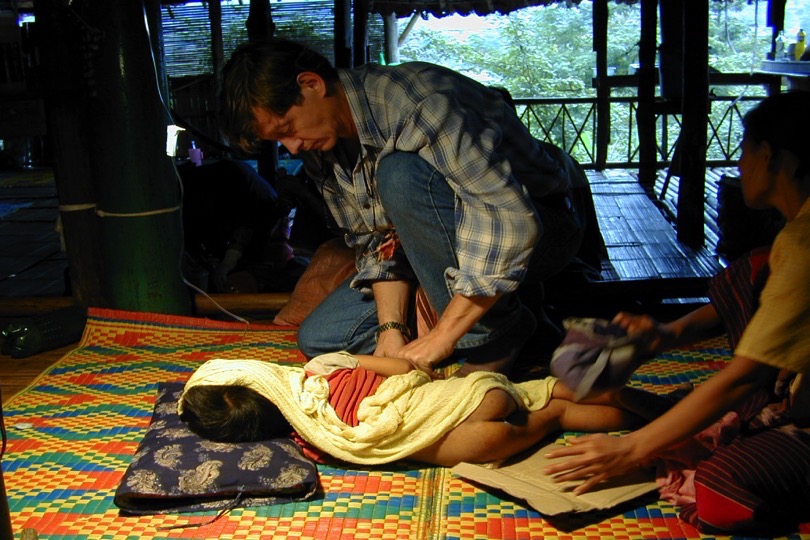 “We know from history that once resistance emerges in this part of the world, then it spreads to the rest of the subcontinent, then sooner or later it will reach Africa”, said François Nosten, professor of tropical medicine, director of the unit and a winner of the 2014 TWAS Regional Prize for science diplomacy. “So, what can be done to stop the spread of resistance? That’s where we appear in the picture.”
“We know from history that once resistance emerges in this part of the world, then it spreads to the rest of the subcontinent, then sooner or later it will reach Africa”, said François Nosten, professor of tropical medicine, director of the unit and a winner of the 2014 TWAS Regional Prize for science diplomacy. “So, what can be done to stop the spread of resistance? That’s where we appear in the picture.”
The unit estimates that, since 1986, it has managed to reduce malaria, once the leading local cause of death, by 95%. They have also reduced the deaths of mothers during childbirth by about 99%. But French-born Nosten, who has lived and worked at the Thai-Myanmar border for 30 years, says researchers and policymakers in the developing world haven’t focused on science diplomacy until recently.
What changed? Myanmar’s government wanted to appear more welcoming to the world after 50 years of military rule. That provided an opening for scientists to emphasize the importance of the drug resistance emerging on their doorstep. The result was rare talks including both the Myanmar Ministry of Health officials and Karen health representatives, where both agreed to allow and support malaria research in areas under the control of either side.
“I’ve been trying to think over the last 30 years: What is trust made of?” Nosten said. “If the people trusted what we do, it’s because we were not doing politics. We were not taking any side.”
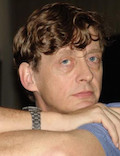 That trust may be what science diplomacy is best-poised to provide developing nations. Since scientists aren’t typically invested in the politics that drive tension between countries, they can bypass the bitter feelings that keep nations from working together. And as science diplomacy continues to bring results, support will likely grow.
That trust may be what science diplomacy is best-poised to provide developing nations. Since scientists aren’t typically invested in the politics that drive tension between countries, they can bypass the bitter feelings that keep nations from working together. And as science diplomacy continues to bring results, support will likely grow.
Scientists’ unique ability to sway political feelings without directly doing politics is what makes such work diplomacy, instead of simply scientific collaboration, said Balasubramanian. He calls science a “diplomatic trump card” that can help to neutralize political pressures.
“Diplomacy looks for any area or attitude of commonality between two parties, and exploits it to bring people, maybe even governments, together”, he said. “Science can and does build bridges between people, institutions and nations.”
Sean Treacy
Edward W. Lempinen contributed to this report

